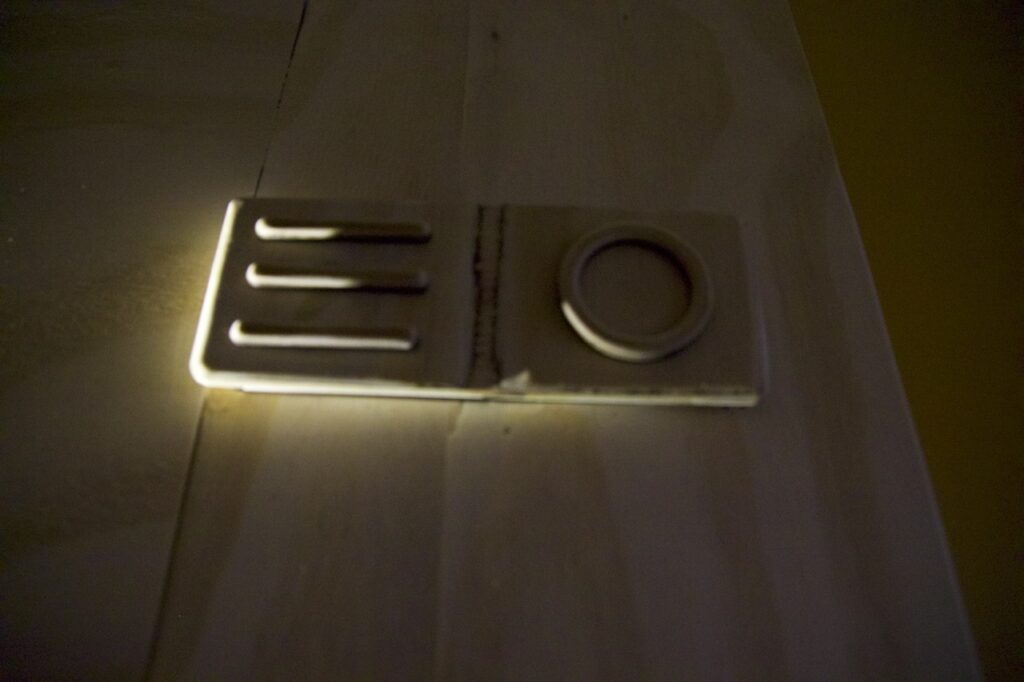Provenance
Alexandra Palocz
Advisor: Kari Love
A tactile-audio story experience for one person in the dark, following a girl who finds a mysterious artifact and the search for its true home.

Abstract
Provenance is a piece about feeling in the dark, making meaning out of the world around us, and what it means to belong. You awaken anew, explore your surroundings through touch, and become part of the story of a girl who finds a magical artifact stolen by birds. As she sets out to discover its true home, you encounter her world together and engage with questions that emerge through the journey.

Technical Details
I knew from the beginning that this would be a piece grounded in physical interaction, and I was drawn to the idea of the audience building something as a metaphor for the progression of the relationship between the protagonist and the artifact she carries. I wanted each piece of the built object to correspond with one piece of the story, and as I wrote, I found that the story wanted to be linear. This meant I needed to enforce a particular order in which the pieces could be added.
That ordering took the form of a base with holes of different shapes, and flat puzzle pieces with pegs attached that fit into these holes. At the beginning, all the holes are plugged with filler pegs, so only one piece can fit into the base. When the story progresses, a disc underneath the base rotates, allowing filler pieces to fall through and reveal new holes one at a time. The disc is turned with a motor, and magnets inside the pegs in the pieces connect copper strips inside the holes, creating switches that can sense when a piece is added to the base.
I wanted the audience to have some direct action or connection the world of the story. This let to two more interactions outside of the central puzzle: a choice input through which you can answer questions posed in the protagonist’s narration, and a trigger that can activate the artifact’s magical powers when the protagonist calls upon them. Physically, these became a lever that presses down one of two push-buttons for the choices, and a turning disc that activates a rotary encoder for the artifact’s magical powers. Both enclosures include vibration motors to draw attention to those areas when they are called upon.
The motors, switches and sensors interface through an Arduino to a computer, which runs a Python program to handle the core logic of the interactions and story and manage the soundscape of the piece.

Research/Context
This project was inspired by a wide array of influences, including escape room experiences with a strong story component and live-action roleplaying games that work with ritual and tactile interaction. I considered sources around haptic perception in the dark and meaning-making through exploration. I read about how people make sense of the space around them, how they learn rules through designed environment setup, and how they construct their understanding of what happens in a story, with the hope of making an experience that brings all these together.

Further Reading
An excerpt from the story:
"I have found something exceptional, today, when I was checking the scavenger bird nests. It is large for a bird trinket, but small enough to hold in one hand. It is covered with tiny intricate marks, but they do not look to me like language.
I turn it over, and the sun sparkles along its sides. That sparkle must have been what drew the eye of the birds. Do they know what they are doing, when they steal trinkets?
I wonder where they found this one. It does not seem to be made of glass, or wood, or metal, but some kind of dark stone that bends the light.
It is very beautiful. I could hide it away, keep it for myself. But then I would be no better than the birds who kept it in the nest. It’s our duty to return the trinkets if we can.
Still, I have seen nothing like this before. I run my fingers again along its edges."
———————————————————————————————————————————————————————————————————
An incomplete selection of sources and inspirations considered in the course of this project:
Groping in the Dark: Intimacy in Nyctophobia (Jack Murray). https://analoggamestudies.org/2023/03/affect-and-intimacy-in-nyctophobia/
Touching for knowing: Cognitive psychology of haptic manual perception. (Yvette Hatwell, Arlette Streri, and Edouard Gentaz, 2003). https://doi.org/10.1075/aicr.53
Constructivist Learning Theory (George E. Hein, 1991). https://www.exploratorium.edu/education/ifi/constructivist-learning
Understanding Systems Suspense (Jason Grinblat, Max Kreminski, Graeme Lennon, Cat Manning, Alexei Pepers, and Lauren Scott, 2023). https://polarisgamedesign.com/2023/understanding-systems-suspense/
Learning to play: understanding in-game tutorials with a pilot study on implicit tutorials (Shuangyuan Cao and Fang Liu, 2022). http://dx.doi.org/10.1016/j.heliyon.2022.e11482
Lok (Blaž Urban Gracar, 2022). https://www.blazgracar.com/lok
Galatea (Emily Short, 2000). https://ifdb.org/viewgame?id=urxrv27t7qtu52lb
Heresy: 1897 (Doors of Divergence). https://doors-of-divergence.ghost.io/heresy/
White Death (Simon Steen Hansen and Nina Runa Essendrop). https://www.ninaessendrop.com/white-death/
